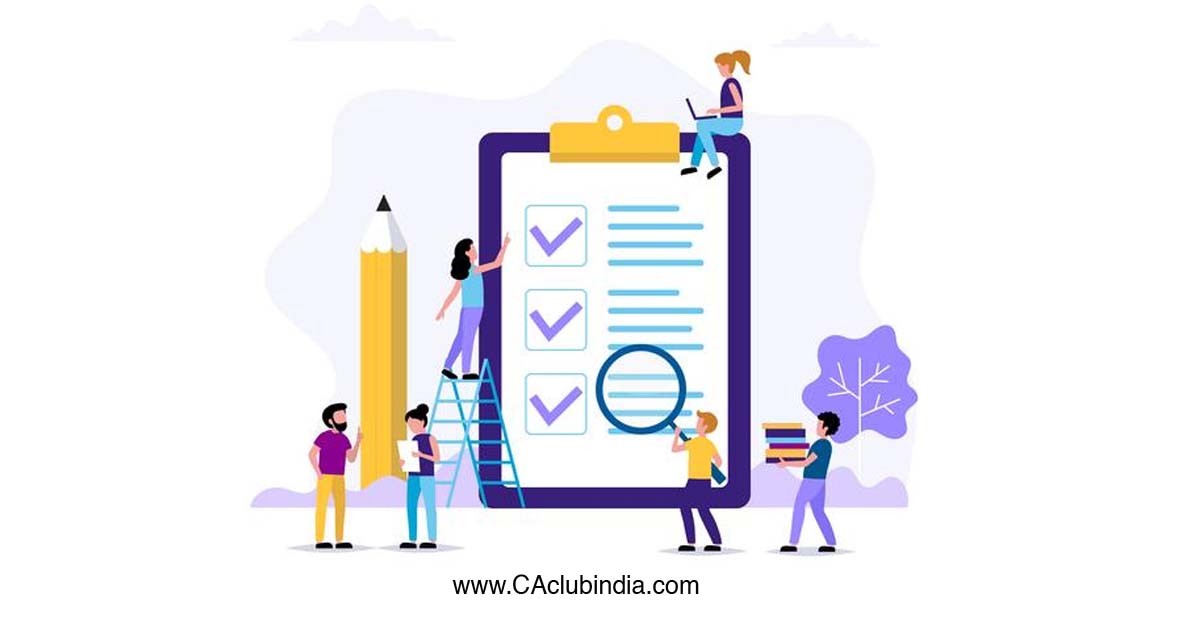Budget 2022 is round the corner and as everyone else, I also have some expectations from the Hon’ble Finance Minister in GST. My ask is relief for MSMEs so that the compliance and related costs decrease for MSMEs and they have an ease of doing business. The present third wave of COVID has further put pressure on the MSME sector and relief on certain points is very much required. The 10 most important expectations are as follows:

1. Payment of GST on receipt basis
An assessee has to pay GST upon raising an invoice irrespective of payment received from the customer. This is a huge working capital cost for MSMEs. In case of an assessee whose Aggregate Annual Turnover is upto 5 crores may be given the facility to pay GST on a receipt basis i.e. upon collection of the invoice and not on raising of the invoice.
2. Exemption from matching of invoices for availing ITC
W.e.f. January 1, 2022, an assessee is allowed to avail Input Tax Credit (ITC) only on the matching of the invoice in GSTR 2B. However, in cases, where a supplier does not upload the invoice, the assessee faces a double whammy as on the one hand he has paid GST to the supplier and on the other hand, he has to again pay GST to the Department (since he cannot avail ITC). This is a huge working capital cost for MSMEs. In the case of an assessee whose Aggregate Annual Turnover is upto 5 crores may be exempted from the matching concept and could be allowed to avail ITC based on self-assessment.
3. Exemption from e-way bills
E-way bills are required for all assignments above Rs. 50,000/ Rs. 1,00,000/- (differs from state to state). However, even in case of small mistakes in e way bill, assessees have to face huge difficulties and have to pay a penalty of 200%. This is a huge problem from MSMEs as even small mistake delays the supplies and even one such penalty can extinguish profits for the entire year. In the case of an assessee whose Aggregate Annual Turnover is upto 5 crores may be exempted from the requirement of e-way bills. A Tax Invoice/ Challan accompanying the goods while in transit should suffice.
4. Relief from filing Annual Returns
An assessee having an Aggregate Annual Turnover of over 2 crores has to file an Annual Return in form GSTR 9. This increases the compliance burden and cost of compliance for the assessee. In case of an assessee whose Aggregate Annual Turnover is upto 5 crores may be exempted from the requirement of filing GSTR 9.
5. Filing of GSTR 1 on a half yearly basis and payment of quarterly basis
Presently assessees upto an Aggregate Annual Turnover of 5 crores can opt for the QRMP scheme which means quarterly returns and monthly payment scheme. This is a compliance burden on small assessees and further relief can be given to reduce the compliance burden. In case of an assessee whose Aggregate Annual Turnover is upto 5 crores may be allowed to file GSTR 1 on a half-yearly basis and payments could be allowed on a quarterly basis.
6. Relief in interest rates
Presently in case of delay in payment of GST interest @ 18% is payable whereas in case of wrong availment of ITC interest @24% is payable. Relief on the same is required as many times the non-payment/ wrong availment is on account of a genuine mistake. In the case of an assessee whose Aggregate Annual Turnover is upto 5 crores may be allowed an interest relief of 6% on both counts.
7. Relief in pre-deposit in filing appeals
In case an appeal has to be filed, a pre-deposit of 10% (upto a maximum of 50 crores) is required in 1st appeal and a pre-deposit of a further 20% (upto a maximum of 100 crores) is required in 2nd appeal. This is a huge cost to small assessees and a working capital blockage. In case of an assessee whose Aggregate Annual Turnover is upto 5 crores may be allowed relief on the filing of appeals at both levels as follows:
- 1st Appeal - 5% (upto a maximum of 1 crore)
- 2nd Appeal - Further 10% (upto a maximum of 2 crores)
8. Exemption from compulsory registration in case selling of e-commerce sites
In case of an assessee, if he/she sells through an e-commerce site, registration is compulsory. This increases the compliance burden for small assessees. The basic exemption of 40 lakhs/ 20 lakhs (special category states) may also be allowed to assessees who sell even on an e-commerce site.
9. Exemption from LUT for export of services in case of small assessees or alternatively increasing the validity to life-time instead of 1 year
In case of small assessees undertaking export of services, getting a LUT, although not cumbersome, but increases compliance and in case LUT is missed, there are huge costs for non-compliance. In the case of an assessee whose Aggregate Annual Turnover is upto 5 crores (services only) may be allowed relief from LUT. Alternatively, the validity of LUT can be increased to lifetime instead of 1 year.
10. Facility to opt-out from e-invoice in case turnover falls below 50 crores
In case an assessee’s turnover is above 50 crores, he is required to follow e-invoice rules. However, if his turnover falls below 50 crores, he still has to continue e-invoice as there is no opt-out scheme from e-invoice. In case the turnover falls below 5 crores, the assessee should be allowed to opt-out to an e-invoice scheme.
We can hope that the Hon’ble Finance Minister takes note of these points and provides the required relief to the MSME sector.
The author can also be reached at tarunkrgupta@yahoo.com








 CAclubindia
CAclubindia

